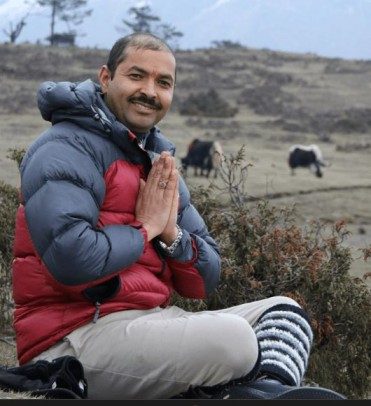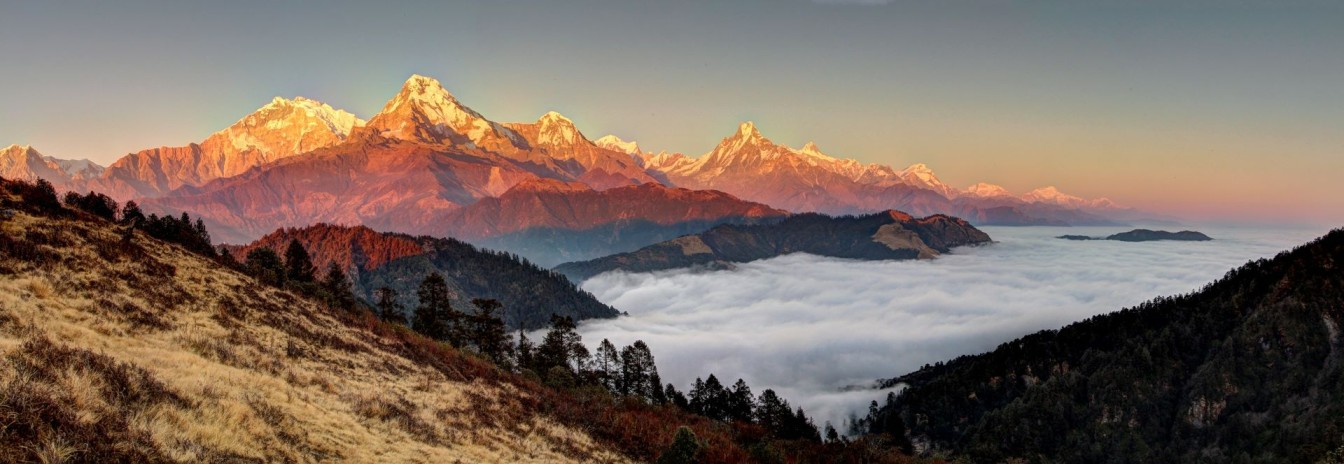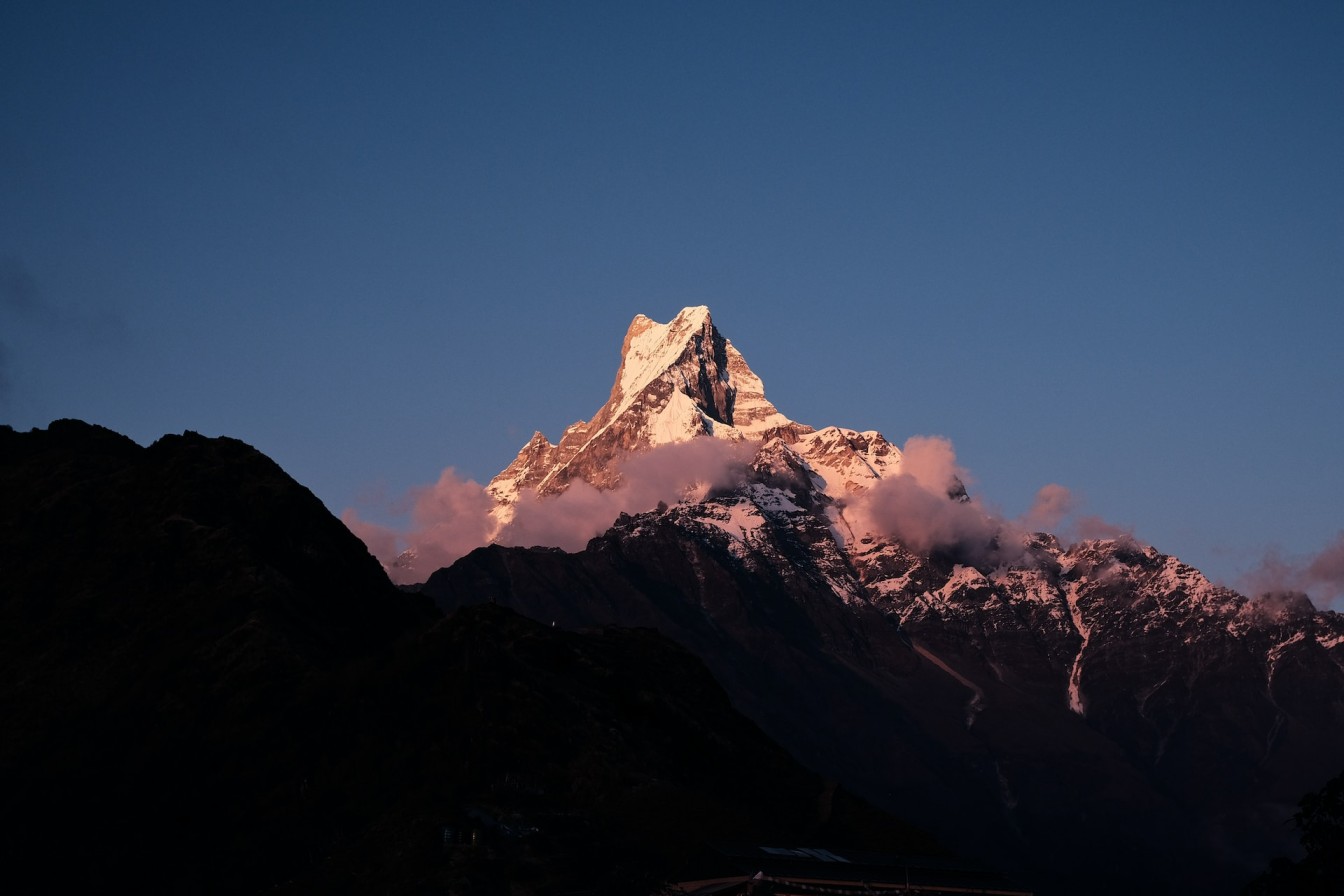
May 19
Ghandruk Trek Difficulty:A Moderate Adventure
Ghandruk Trek Difficulty is considered to be moderate. The Trek is located in the Annapurna Region's Heart. This is a lovely community with a lot of scenic and natural beauty. 2012 meters above sea level is the altitude of this settlement. The majority of Gurung ethnic settlements are traversed, as are several others.
This is well-liked by trekkers who enjoy leisurely walking for a few days. A brief trek is required in Nepal, the Himalayan country. You can see Mount Annapurna, Fishtail, Tent Peak, and Himchuli quite well from the Ghandruk Trek. You will view the lovely rhododendron forests before you reach the village. On this Ghandruk walk path, this is one more of the best experiences we may have.
This is popular among those trekkers who love soft and a few days of walking. It is a short trek in the land of the Himalayas, Nepal. Ghandruk gives you an excellent view of Mount Annapurna, Fishtail, Tent Peak, and Himchuli. Before arriving at the village you will see the beautiful Rhododendron forests. This is another best experience we can get on this trek route. This is one of the easy and short trekking routes in Nepal.
This is well-liked by hikers who enjoy leisurely strolling for a few days. It is a short trek in Nepal, the Himalayan country. You can see Mount Annapurna, Fishtail, Tent Peak, and Himchuli very well from the Ghandruk walk. You will view the stunning rhododendron forests before you reach the village. This Ghandruk walk path, this is yet another of the best experiences we may have. One of Nepal's simple and quick trekking routes is this one.
This is well-liked by hikers who enjoy leisurely strolling for a few days. It is a short trek in Nepal, the Himalayan country. You can see Mount Annapurna, Fishtail, Tent Peak, and Himchuli very well from the Ghandruk walk. You will view the stunning rhododendron forests before you reach the village. This Ghandruk walk path, this is yet another of the best experiences we may have in Ghandruk Trek Difficulty.
Why Ghandruk Trek?
Ghandruk, a picturesque village located in the Annapurna region of Nepal, is a popular destination for trekkers from around the world. The Ghandruk offers a unique and rewarding experience that combines breathtaking natural beauty, cultural immersion, and a glimpse into the traditional lifestyle of the Gurung people.
We can enjoy the best view of Annapurna South and Fishtail Mountain, visit a primarily run museum, and explore a village with a beautiful Gurung Community. Nayapul serves as the gateway to Ghandruk Trek. It takes about 2 hours by local bus and 1 hour by taxi. trek is a short trek and perfect for trekkers enjoying the beautiful mountain scenarios.
In addition to the breathtaking landscapes, the Trek allows you to immerse yourself in the rich cultural heritage of the region. Ghandruk is a traditional Gurung village, and as you explore its narrow stone-paved streets, you will encounter charming traditional houses, intricate wood carvings, and welcoming locals. The Gurung people have a distinct culture and are known for their warm hospitality, making your stay in Ghandruk a truly enriching experience.
The Ghandruk is also suitable for trekkers of varying fitness levels. The trail offers a good balance between challenging ascents and gentle descents, making it accessible to both beginners and experienced hikers. The well-maintained paths, comfortable teahouse accommodations, and local guides ensure a safe and enjoyable trekking experience.
Moreover, the Ghandruk allows you to contribute to the local economy and support sustainable tourism. The trekking route passes through several villages, providing opportunities to interact with the locals, sample local cuisine, and purchase authentic handicrafts. By choosing this trek, you can positively impact the lives of the Gurung community and help preserve their cultural heritage for future generations.
In conclusion, the Ghandruk offers a captivating blend of natural beauty, cultural immersion, and a sense of adventure. Whether you are seeking stunning mountain vistas, cultural experiences, or a chance to explore the Himalayas at your own pace, this trek is an excellent choice. So lace up your hiking boots, pack your backpack, and get ready for an unforgettable journey through the enchanting landscapes of Ghandruk.
Ghandruk Trek Difficulty
The Trek is a popular and rewarding trekking route in Nepal, offering breathtaking views of the Annapurna and Dhaulagiri mountain ranges. Situated in the Annapurna Conservation Area, this trek takes you through lush forests, terraced fields, and traditional Gurung villages, providing an immersive cultural experience alongside the natural beauty of the region.
In terms of difficulty, Trek falls into the moderate category. While it is not as strenuous as some of the more challenging treks in the region, it still requires a reasonable level of fitness and endurance. The trail involves a combination of uphill and downhill sections, with some steep and uneven terrain. Trekkers should be prepared for some long and gradual ascents as well.
The total duration of the Trek is typically around 4 to 5 days, depending on your pace and itinerary. The daily walking distances vary between 5 to 7 hours, covering an average of 10 to 15 kilometers per day. It is recommended to have prior trekking experience or engage in regular physical exercise before attempting this trek to ensure a comfortable and enjoyable journey.
Acclimatization is an important aspect of any trek in the Himalayas, and the Trek provides ample opportunities for it. The highest point of the trek is Tadapani, situated at an altitude of around 2,590 meters (8,500 feet). It is advisable to take your time, acclimatize properly, and stay hydrated throughout the trek.
It is always recommended to trek with a local guide or join an organized trekking group for safety reasons and to make the most of your experience. A knowledgeable guide can provide valuable insights into the local culture, flora, fauna, and ensure your safety during the trek.
In conclusion, the Ghandruk Trek Difficulty offers a moderate level, suitable for those with a reasonable level of fitness and some prior trekking experience. With its stunning mountain vistas, cultural immersion, and accessible infrastructure, this trek is a great choice for adventurers looking for a memorable experience in the Annapurna region of Nepal.
Overcoming Ghandruk Trek Difficulty
The altitude is one of the Ghandruk trek's noteworthy difficulties. Located at a height of roughly 1,940 meters (6,364 feet), Ghandruk hamlet itself offers trekkers the opportunity to go to higher elevations. Acclimatizing correctly and being aware of altitude sickness symptoms is crucial.
Altitude-related issues can be mitigated with sufficient preparation, which includes physical training and progressive ascent. Even while the Ghandruk trip isn't regarded as particularly challenging, it's nevertheless crucial to plan ahead and make the appropriate provisions. The trekking experience can be improved by hiring a knowledgeable guide or joining a group since they can offer direction, support, and local expertise.
Embarking on the Trek can be a thrilling adventure filled with mesmerizing landscapes and cultural experiences. However, like any trekking expedition, it can also present challenges. By being prepared and adopting the right mindset, you can overcome this Ghandruk Trek Difficulty and make your Ghandruk an unforgettable journey. Here are some valuable tips to help you navigate and conquer the challenges along the way.
1. Physical Preparation:
The Trek involves hiking through diverse terrain, including steep ascents and descents. To overcome physical challenges, it is essential to prepare your body beforehand. Engage in regular exercises such as cardio, strength training, and endurance-building activities to improve your stamina and fitness levels. Additionally, incorporate hiking or walking on hilly terrain into your training routine to mimic the conditions you will encounter during the trek.
2. Acclimatization:
Altitude sickness can pose a significant challenge during the Ghandruk Trek. It is crucial to allow your body enough time to acclimatize to the higher altitudes. Gradual ascent and frequent rest breaks are recommended to help your body adjust. Stay hydrated, avoid alcohol and smoking, and listen to your body's signals. If symptoms of altitude sickness, such as headaches or dizziness, persist or worsen, descend to a lower altitude and seek medical assistance if necessary.
3. Proper Gear and Clothing:
Investing in good quality trekking gear and clothing is crucial for a comfortable and safe journey. Ensure you have sturdy hiking boots, a waterproof and breathable jacket, comfortable layers for changing weather conditions, and a reliable backpack to carry your essentials. Don't forget to pack essential items such as sunscreen, a hat, sunglasses, insect repellent, and a first aid kit.
4. Mental Resilience:
Trekking can be mentally challenging, especially when faced with fatigue or unexpected obstacles. Cultivate a positive and determined mindset to overcome these difficulties. Set realistic goals, take frequent breaks, and practice mindfulness to stay focused and enjoy the journey. Surround yourself with supportive and like-minded individuals who can encourage and motivate you along the way.
5. Local Guides and Porters:
Enlisting the help of experienced local guides and porters can greatly enhance your trekking experience. They possess invaluable knowledge of the route, weather conditions, and cultural insights. Their expertise will not only ensure your safety but also provide you with a deeper understanding of the region. Furthermore, employing local guides and porters supports the local economy and communities.
Essential Gear and Equipment
When preparing for the Ghandruk trek, it is essential to have the right gear and equipment to ensure a comfortable and safe journey. It can reduce the Ghandruk Trek Difficulty . Here are some key items you should consider:
Clothing:
Pack clothing suitable for various weather conditions, including lightweight and moisture-wicking t-shirts, long-sleeved shirts, a fleece or down jacket for colder temperatures, waterproof and breathable pants, thermal base layers, and a rain jacket or poncho.
Footwear:
Invest in sturdy and comfortable hiking boots with good ankle support. Make sure they are broken in before the trek to avoid blisters. Bring a pair of lightweight and breathable hiking socks for moisture control.
Backpack:
Choose a backpack with sufficient capacity to carry your essentials, ideally between 30-40 liters. Look for one with a supportive and adjustable harness system for a comfortable fit. A rain cover or a dry bag can protect your belongings from rain.
Trekking Poles:
Consider using trekking poles to provide stability and reduce strain on your knees and joints, especially during steep ascents and descents. Adjustable poles are ideal for adapting to different terrains.
Sleeping Bag:
Carry a lightweight and compact sleeping bag suitable for the temperatures you expect during your trek. It should be rated for temperatures around freezing or slightly below.
Headlamp/Flashlight:
A reliable headlamp or flashlight is essential for navigating in low-light conditions, especially during early morning or late evening hikes. Don't forget to bring extra batteries.
Water Bottle and Purification System:
Carry a refillable water bottle or hydration bladder to stay hydrated throughout the trek. Additionally, bring a water purification system, such as water purification tablets or a water filter, to ensure access to safe drinking water.
Navigation Tools:
While the trek generally follows established trails, it is still wise to carry a detailed map, a compass, or a GPS device to aid navigation. Familiarize yourself with the route beforehand.
First Aid Kit:
Prepare a basic first aid kit containing essentials like adhesive bandages, sterile gauze, blister pads, antiseptic ointment, pain relievers, and any personal medications you may require. Consider taking a wilderness first aid course for additional knowledge.
Sun Protection:
Protect yourself from the sun's rays by carrying a wide-brimmed hat, sunglasses with UV protection, and sunscreen with a high SPF. Lip balm with SPF is also recommended.
Toiletries and Personal Items:
Pack toiletries like toilet paper, wet wipes, hand sanitizer, and a small towel. Include personal items such as a toothbrush, toothpaste, and any other necessary hygiene products.
Miscellaneous:
Other useful items include a lightweight and quick-drying towel, a multi-tool or Swiss army knife, a camera or smartphone for capturing memories, spare batteries or a portable charger, and a travel adapter if needed.
Remember to pack light and prioritize essential items. It is also beneficial to consult with experienced trekkers or travel guides for specific recommendations based on the time of year and current conditions.
Best Season for the Ghandruk trek
Ghandruk, located in the picturesque Annapurna region of Nepal, is a popular destination for trekkers from around the world. This beautiful village offers stunning views of the Himalayas, rich cultural experiences, and an opportunity to immerse oneself in the natural beauty of the region. While Ghandruk can be trekked throughout the year, certain seasons stand out as the best for this adventure.
Mid-September to Mid December and Mid February to the end of May is the best time for trekking in Annapurna Region. You can make it further exciting by joining in extra activities. The time period covers high temperatures and warm outstanding winter views. Trekking in summer will be possible but the temperature will be quite cold. Ghandruk trek in summer will be affected by rain.
The trip departure date of Ghandruk will be on any date which you feel comfortable.
It is advisable to plan and prepare for the trek according to the chosen season. It is essential to check weather forecasts, pack appropriate clothing and gear, and be aware of any permits or requirements. Hiring an experienced guide can also greatly enhance the trekking experience and ensure safety along the way.
In general, beginning some type of cardiac activity in the morning or the evening is one of the finest ways to get ready for any kind of trek. Your stamina should be the main goal of your cardio workouts. To prepare for the walk, you may also try sprinting up and down a slope or set of steps. You will become more accustomed to the Ghandruk trek's difficult terrain if you do this. Overall, you will be able to easily overcome the Ghandruk Trek Difficulty if you practice these activities for a few months before your real excursion.
Accommodation and Facilities
When it comes to accommodation and facilities on the Ghandruk trek, there are several options available to trekkers along the route. The trek passes through several villages, and the most common form of accommodation is tea houses or guesthouses. These teahouses are basic but comfortable lodges that cater to the needs of trekkers.
The teahouses in Ghandruk offer a range of facilities to ensure a pleasant stay. The rooms are usually clean and equipped with basic furniture such as beds, blankets, and pillows. However, it's advisable to bring a sleeping bag for extra warmth and comfort.
It's important to note that the availability of electricity and Wi-Fi in teahouses can be limited. Some teahouses may have electricity available only during certain hours of the day, and charging electronic devices may incur an additional cost. Wi-Fi access may be open in some teahouses, but the connection speed and reliability can vary.
Overall, while the accommodation and facilities along the Ghandruk trek are basic, they cater to the needs of trekkers and provide a comfortable resting place after a day's hike. It's recommended to carry some cash, as credit card facilities may not be available in these remote areas. This can reduce the Ghandruk Trek Difficulty level.
Final Say
So , after knowing the Ghandruk Trek Difficulty. Its hikes in Nepal's stunning Annapurna region provide breathtaking scenery and a distinctive cultural experience. The Ghandruk treks can range in complexity based on factors like fitness level and experience, but it is typically regarded as a moderately difficult walk appropriate for both novice and expert trekkers.
On average, the Ghandruk journey requires 4-6 hours of walking per day over a distance of about 10–12 kilometers. The trail has stretches that are both uphill and downhill, with some difficult terrain. Trekkers may need to have a modest level of physical stamina and endurance due to the stone steps, uneven routes, and sporadic ascents and descents. If you are really interested in the Ghandruk trek you can call us now !!
More Blogs
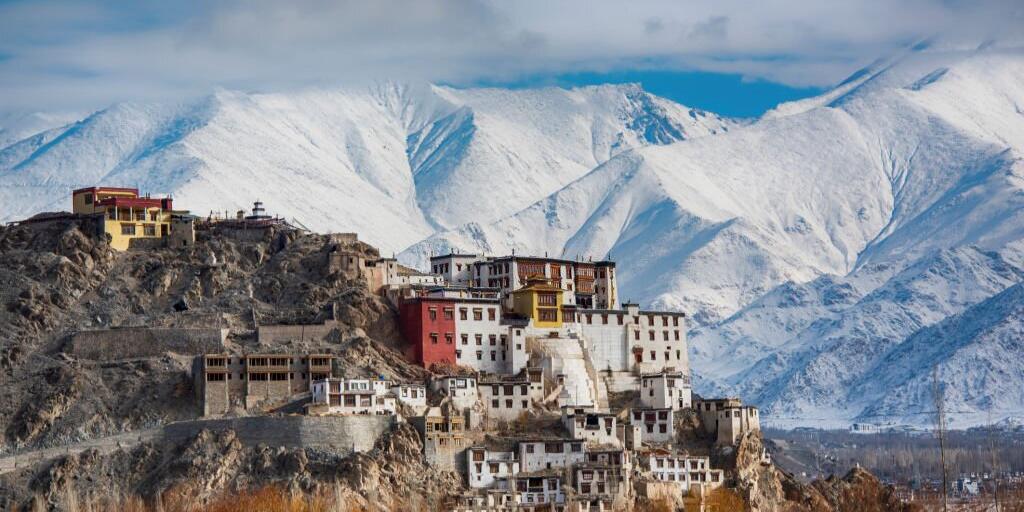
Jan 31
Places to Visit in Mustang on a Budget
Are you looking for Places to visit in Mustang? Don’t worry you will find it here! Mustang is an incredibly unique and beautiful regi..
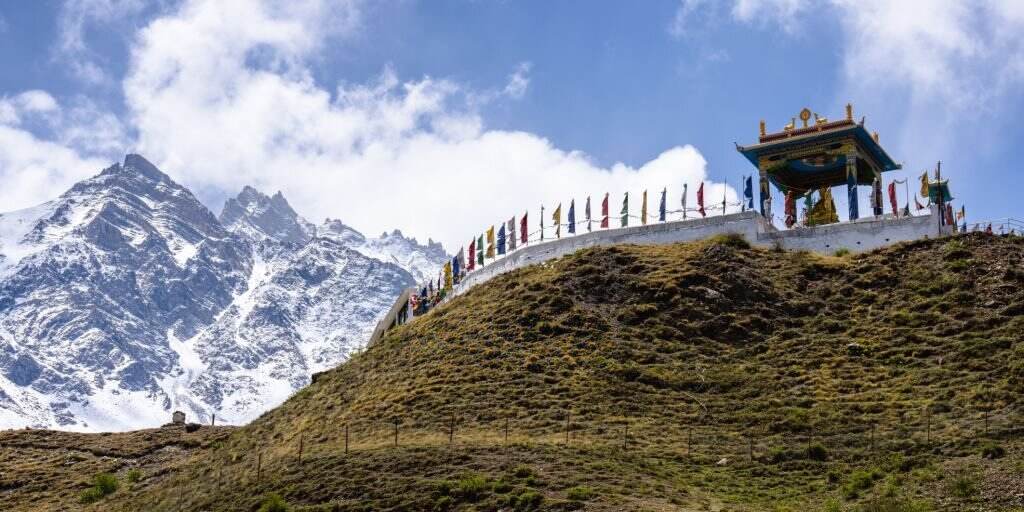
Feb 02
Best Time to Visit Mustang Nepal on 2024
Best time to visit mustang Nepal is during the spring March to May) and autumn (September to November) seasons. But why? You will know ..

Feb 07
Is Nepal safe for female travelers?
Is Nepal safe for female travelers? Obviously Yes !!. In the United States, 65% of women travel alone, according to a Booking.com surv..

